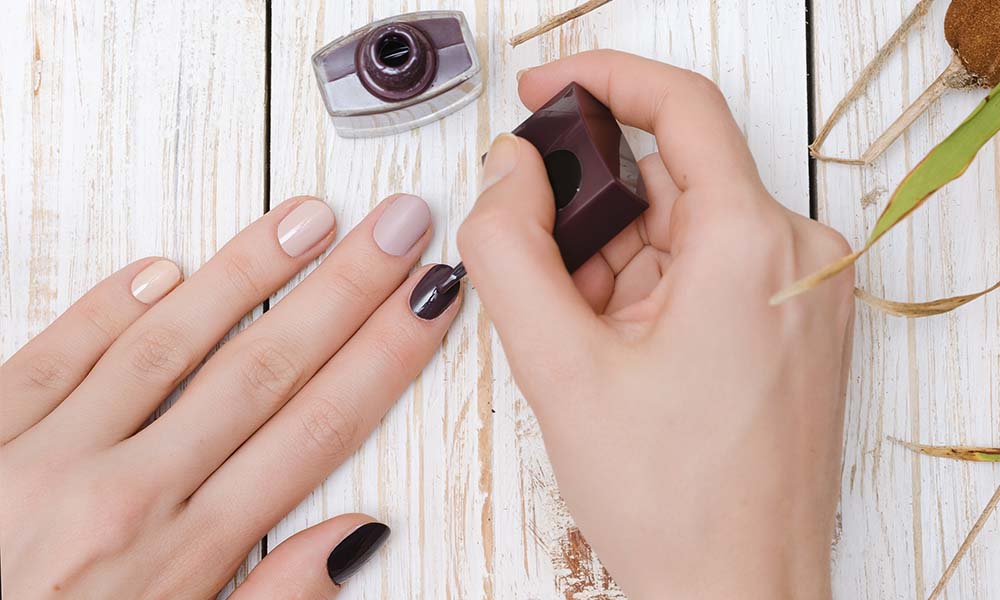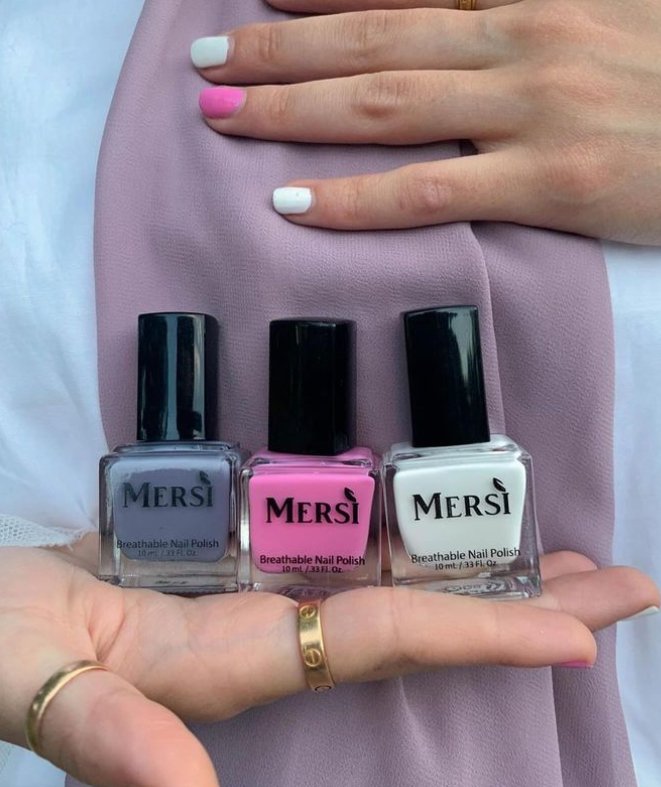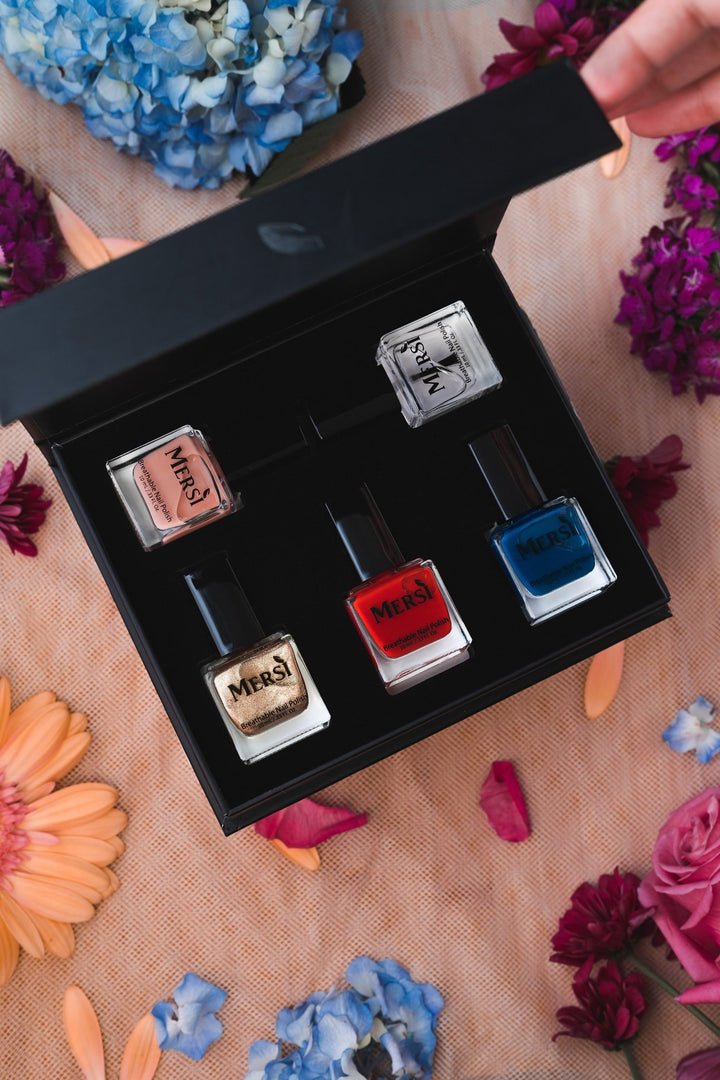If you are tired of traditional nail polish smudging or chipping your nails, Henna is here to help. Being a naturally occurring dye, it gives a beautiful reddish-orange color to your nails. The best part? It doesn't damage your nails and stays there until they grow out.
The Henna you apply to your nails is the same as the one you put on your hair. However, the application process varies greatly. If you can not find a ready-to-apply henna nail color in stores, you can easily make your mixture at home.
This article will show you how to make your own henna nail polish.
What is Henna Nail Polish?

Henna is a natural plant dye used to color hair or make exotic pattern-work temporary tattoos on the skin.
Henna is a 100% natural powder from a plant and comes in varying colors. After the extraction of this powder, it is mixed with an acidic liquid, such as lemon juice, and is left to activate for a few hours or even for a day. This process involves getting the plant's natural color into the mixture or paste.
Once the plant's natural dye chemicals are released, you can use the mixture to create a reddish-brown hue on your nails. The longer you keep it on, the deeper the color. The best thing is that it is free from all the toxic chemicals and stays on your nails for up to three weeks.
Henna is very difficult to remove from your nails. So be prepared to have the color stay on till they grow out. So, you can enjoy a perfect henna nail color without worrying about your nails being de-moisturized or brittle.
How To Make Your Own Henna Nail Polish?
Henna nail polish can be made at home easily. Yes, you heard it right. You can make your henna nail polish right now by following the below two recipes. The steps are easy to follow, so let's start.
Two different kinds of henna nail polish, all with two different colors.
Recipe Number 01: Red Nose Nail Polish
These are the things you need.
- Red Henna Powder (readily available in markets)
- Beetroot Powder (this intensifies the rose color)
- Olive oil or water
Steps:
- Take a bowl and put one teaspoon of red Henna in it.
- Now take one teaspoon of beetroot powder and put that into the bowl with Henna and mix it well.
- Take two teaspoons of olive oil (or water if no olive oil is there). Now mix the mixture well enough to make it a paste. You can add more olive oil (or water) if needed to make it paste form.
Recipe Number 02: Warm Sunset Nail Polish
Below are the things you will need.
- Brown Henna Powder (easily available in markets)
- Turmeric powder (this adds a golden hue to brown henna)
- Olive oil or water
Steps:
- Put one teaspoon of brown Henna in a bowl (take brown color if you don't have red henna).
- Now take one teaspoon of turmeric powder, put that into the bowl with the henna, and mix it well.
- Take two teaspoons of olive oil (or water if no olive oil is there). Now mix the mixture well enough to make it a paste. You can add more olive oil (or water) if needed to make it into a paste.
Don't know where to buy henna powder? You can purchase red henna powder (and quite a few other shades) from most local health food shops or on Amazon or Etsy.
Does Henna Color Nail Polish Cause Smudges?
As the henna polish is a stain, you don't have to worry about smudges and roughness on your hands as caused by traditional nail polishes. Henna polish will stay permanently on your nails until they grow out. So, you don't have to get into the hustle of reapplying the nail color every few days.
Also, don't store the remainder of the henna polish. It would help if you made a fresh paste when you want to polish your nails again.
Why Prefer Henna Over Traditional Nail Polishes?

Traditional nail polishes can harm your nails because they are made of chemicals. Are these chemicals good for your nails or skin? Let's dig into it. The trio of chemicals used in nail polishes is formaldehyde, toluene, and dibutyl phthalate.
Formaldehyde hardens the nails, dibutyl phthalate is a plasticizer (plastic), and toluene is a cheap colorless solvent.
Along with these, many other harmful chemicals are used. Lead (which is detrimental to the whole of the organs), and hydroquinone monomethyl ether (MEHQ/HQ) can cause skin and eye irritation. Also, yellow patches appear when the polish is removed, caused by the camphor used in the polishes, and cause disorientation and changes after removal.
Yes, all these chemicals with such side effects lie on your nails. However, if you choose a reliable brand that offers quality nail colors, you will not have to face these problems.
Plus, if you want to get rid of these toxic chemicals but also paint your nails, Henna nail polish can be a good solution. Don't know about it? Let's get into the details of how it benefits you.
Looking to stay away from these chemicals? Henna is an ideal alternative! However,breathable nail polish is also an excellent alternative! The formula allows water and oxygen to permeate through allowing your nails to breathe and is also free of the 11 harsh chemicals typically found in nail polish.
How to Apply Henna Nail Polish?
The following steps will show you how to apply the henna nail polish.
Step 1: Prepare Your Cuticles And Nails
File your nails to your desired shape, then gently push back your cuticles. Wash your nails, then wipe them with an apple cider vinegar-soaked cotton ball to eliminate any remaining dirt or oil.
Apply a thin ring of all-purpose adhesive to cuticles and the skin around nail beds to prevent Henna from staining them. Allow the glue to dry completely before proceeding.
Step 2: Apply The Henna Paste To The Nails
Apply several thin applications of henna paste to your nails with a nail brush. Use a minimal amount at once—just a dab will suffice! You'll want to be particularly careful not to get any on your skin or clothing, as the staining effects of activated Henna are powerful and almost instant.
Step 3: Wait! Have patience
Allow 30 minutes to an hour for the paste to dry. If you want a darker hue, leave it on for a more extended period—a few hours should suffice, but you can leave it on overnight. Remember the staining power once more! Wrap your nails with tissue or an old towel before bed if you'll be sleeping with henna paste on them.
Step 4: Remove The Henna, And You're Done
Use a cotton ball soaked in lemon juice or apple cider vinegar to remove the henna paste. Apply two or three coats of your favorite clear polish for a lustrous finish. Avoid getting your nails wet if you intend to leave the stain alone for 12 hours.
The Benefits of Henna Nail Polish

Henna has so many benefits of its own. We shall discuss it later, but when compared, henna nail polish has no chemicals to destroy, worsen, or harden the nails. No chemicals to work against you on your fingers.
The following are some benefits you should not forget about henna nail polish.
Stronger Nails:
Apply a thick henna paste to your nails and let it dry before removing the coat. Henna is an excellent treatment for thin and brittle nails. Because Henna contains keratin, which protects your nails from damage, applying it to your nails will leave them strong and healthy.
Natural and Safe:
Henna is a natural product that will not hurt your nails. As opposed to nail Polish, using a Henna is also advantageous because it lasts longer. This means you'll spend less money on your nails as you won't have to change the color as frequently.
Protection Against Fungal Infection:
Fungal infections are dangerous to your nails, hence there is a need to protect them. The cuticles are always prone to bacteria and infections, which cause the nails to discolor or crack. Henna is an excellent remedy to protect from bacteria and fungal infections.
Lasts longer:
The critical advantage of henna nail polish is that once you have applied it, it will last longer than three weeks. Imagine using henna nail polish and having no worries for the next 3 to 4 weeks. Sounds fascinating, right?
The Colors of Henna Nail Polish
Henna nail polish can be made in different colors or shades. For example, black henna nail polish, red henna nail polish, etc. Different colors and shades of henna nail polish are given below:
Dark Red Color
The dark red color is the most famous and is in the highest demand, like other non-henna nail polishes. It can come in 10 different shades of red.
Brown Color
It is also a popular color for henna nail polish if you notice. Plus, it also comes in different shades of brown.
Black Color
Black-colored henna nail polish is also available on the market and can be made in the home. It looks so aesthetic and attractive because the black color is universal.
Warm Sunset
The recipe for this color is given above, and how it is made and what ingredients are used are explained above.
Red Nose
This colored nail polish is also explained above. How and in what way this could be made is all described above.
How to Remove Henna Nail Polish?
Again, please keep in mind Henna nail polish is very difficult to remove.
With that being said, If you have Henna stained nails, here are the ways you can try to remove henna nail polish:
Salt:
Salt is a commonly used cleansing agent. So, to remove henna using salt, mix a handful of salt in water in a bowl. Then, dip your Henna-colored nails into the salt solution for over 20 minutes. Soon, the color will disappear from the nails. It's also a natural process, and you don't have to worry about the side effects.
Lemon and Baking Soda:
These two are the most effective solutions for removing dark henna nail color from your nails. You can also use it to clean your home surfaces. However, it's natural, so you don't have to worry about its effects. Make a solution by mixing two tablespoons of baking soda with one squeezed lemon.
Now, take a cotton swab and lightly dip it in the mixture. Tape these swabs on your nails and leave them for over two hours. Then, remove them using water and soap. Your perfectly cleaned nails are ready.
Warm Water:
If you have no ingredients to help remove henna stains, turn to warm water. Make sure the water you use isn't extra hot. Keep your hands in warm water for about 20 minutes. It softens the henna color on nails, and you can easily remove them later using a toothbrush.
Olive Oil and Salt:
Another excellent hack to remove henna nail color is using olive oil and salt. Mix and blend two tablespoons of salt and olive oil in a bowl. Use a cotton swab, dip it in the mixture, and rub it over your nails. You'll soon see the color disappearing from your nails.
Toothbrush:
The toothbrush isn't only good for cleaning teeth and has other uses. It's a versatile cleaning agent and easily removes strong henna stains from your nails. Apply a small quantity of toothpaste to your nails, spread it all over, and leave for 10 to 15 minutes. After that, remove the color by rubbing your nails with your fingers, and you are good to go.
Conclusion
Using Henna to color your nails and hair is an ancient trick. If you cannot find a perfect henna color for yourself, you can easily make it at home. Follow the above recipes, and your henna nail color will be ready. After making henna, follow the application guidelines carefully. We hope you found this article helpful about henna nail color and its information.
FAQs
How long does black Henna Color last on your nails?
3 to 4 weeks but can last even longer
Does Henna prevent you from nail fungus?
Yes. Henna does protect the nails (cuticles) from getting a fungal infection.
Does Henna fade away?
No. The Henna does not fade away. Instead, your nails grow out, and the color disappears.
Is henna nail color halal?
Yes, for Muslim women, it is halal, and they can perform wudu (ablution) by wearing henna nail color and can perform religious activities. If you're looking for an alternative to traditional nail polish, henna nail polish and halal nail polish are your best bets!
What cultures use henna nail color the most?
The henna nail color is used the most in Middle Eastern countries and the sub-continental regions.
What countries use Henna often?
The people of Morocco, Mauritania, Yemen, Libya, Somalia, Sudan, the United Arab Emirates, India, Pakistan, and many other Asian countries use Henna on their nails and hair.





Leave a comment
This site is protected by hCaptcha and the hCaptcha Privacy Policy and Terms of Service apply.